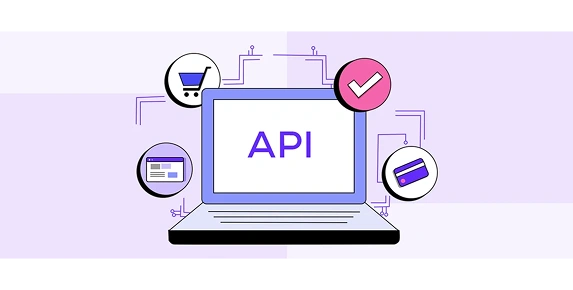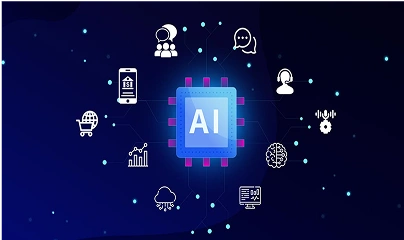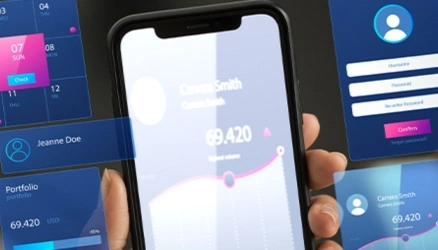By: Nilesh Jain
|
Published on: June 15, 2025
Think about the last time you used an app and everything just “clicked.” The search result felt right, the homepage knew your preferences, and the chatbot actually answered your question.
That’s not luck. That’s AI-powered user experience at work.
Modern users no longer interact with apps they expect apps to interact with them. Whether it’s an e-commerce platform, a B2B portal, or a SaaS dashboard, AI in modern web applications is transforming how people experience digital products.
From Static Screens to Intelligent Experiences
In traditional UX design, users had to do all the work click, scroll, search. Now, with machine learning in user experience, apps adapt in real time.
They read patterns.
They learn habits.
They even predict intent.
For businesses, this means smarter engagement and better retention. For users, it means getting what they want faster and more intuitively.
Let’s Break It Down: What AI Can Actually Do
1. Personalized UX with AI
Each user gets a version of your app tailored to their preferences. AI tracks user behavior what they click, how long they stay, what they skip and serves content or features accordingly.
Example: Netflix’s recommendation engine
Use case: A SaaS platform reorders dashboard widgets based on user behavior
Want to make your platform feel tailor-made for every user?
2. Smart UI Using AI
A “smart” interface goes beyond responsiveness. It adjusts content, layouts, and even actions based on real-time interaction.
Example: An e-commerce filter that auto-adjusts options based on past behavior
Use case: A booking app that predicts user journey based on previous usage
3. Conversational UI with AI
Users expect instant answers. With natural language processing, AI can power chatbots and voice assistants that actually understand context not just keywords.
Example: A helpdesk bot that routes support queries based on tone and urgency
Use case: B2B dashboards with chat-based report generation
4. Predictive Web UX
Why wait for a user to click when AI can predict their next step?
Example: Autofill forms based on partial input
Use case: CRM tools suggesting the next lead to follow up based on data patterns
Predictive UX saves time, reduces errors, and boosts conversions.
AI UX in SaaS Platforms: Not Just a “Nice to Have”
SaaS platforms are often heavy lots of modules, settings, and data. Users don’t want to dig. They want smart shortcuts.
With AI UX for SaaS platforms, you can:
-
Show the most used tools up front
-
Offer recommendations for next actions
-
Detect usage drop and prompt re-engagement
This isn’t guesswork. It’s behavior-based design.
AI-Driven UX for B2B Web Apps: Precision Over Flash
In B2B apps, clarity, speed, and relevance matter more than visual flair. AI helps by:
-
Prioritizing high-value actions
-
Highlighting anomalies in data
-
Offering intelligent summaries
No more clunky interfaces. Just intelligent workflows.
AI in E-Commerce UX: Less Searching, More Buying
Forget 100 filters. AI lets users find what they want fast.
With AI-enhanced e-commerce UX, brands can:
-
Recommend products based on browsing history
-
Offer bundles based on past purchases
-
Adjust offers in real-time
This improves not just UX but revenue.
Turn your e-commerce UX into a conversion machine.
Mobile-First? AI-First Is Better.
With AI-enabled mobile‑web user experience, your app can adapt not just to screens but to behaviors.
-
Optimize for low bandwidth
-
Prioritize high-engagement content
-
Simplify actions with contextual prompts
It’s mobile UX built smarter.
The Result? Web Apps That Think Before Users Do.
Good design is invisible. Great design is predictive. AI bridges that gap.
Whether it’s AI for web interface optimization or intelligent web app experience you’re not just improving UX. You’re rethinking it.
Ready to build an app that thinks before your user clicks?
Frequently Asked Questions (FAQs)
AI helps web apps respond to users intelligently by personalizing content, predicting actions, and adapting interfaces in real time.
It’s a design approach where user interfaces are powered by behavioral data, machine learning, and automated decision-making.
Yes. AI uses browsing habits, clicks, and patterns to serve personalized layouts, content, and features.
A smart UI adjusts based on user actions, device context, and past behavior making the interface feel more intuitive.
AI in SaaS platforms improves workflow, prioritizes key actions, and creates a more responsive, relevant dashboard.
Absolutely. AI helps B2B users by simplifying data views, predicting next steps, and automating routine actions.
It’s when AI anticipates what the user needs before they act such as autofilling details or suggesting next steps.
Yes. AI can identify slow-loading pages, user pain points, and drop-offs then suggest improvements.
A dashboard that auto-updates, prioritizes key data, and personalizes the layout based on user roles or history.
Yes. Even small teams can integrate AI tools to improve UX without heavy development work.











































































